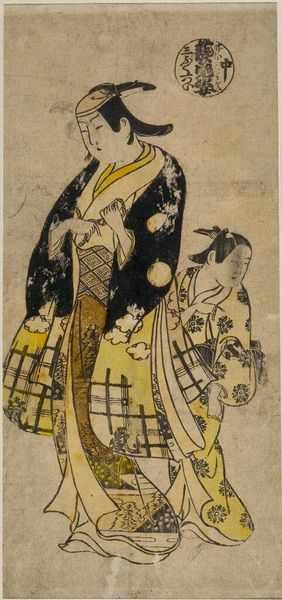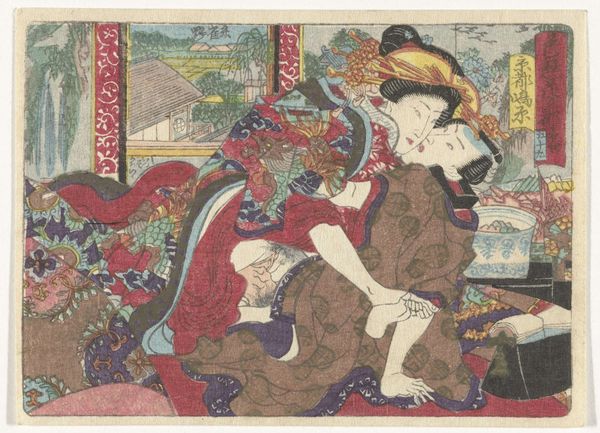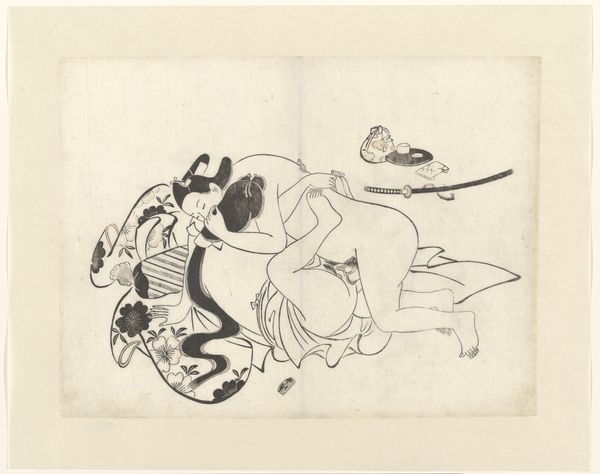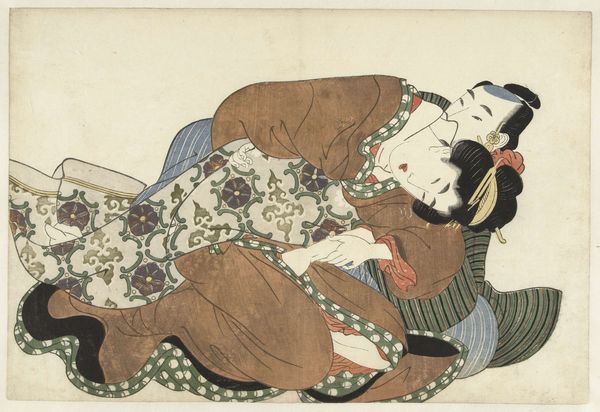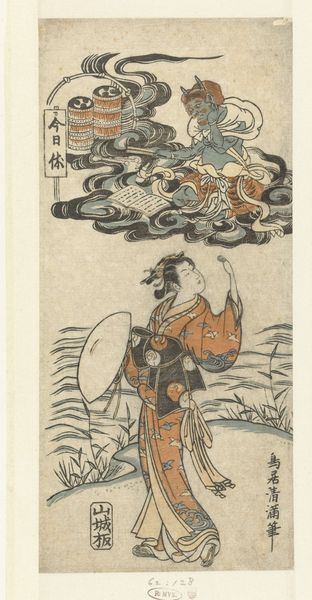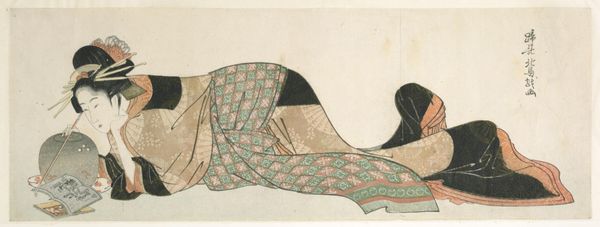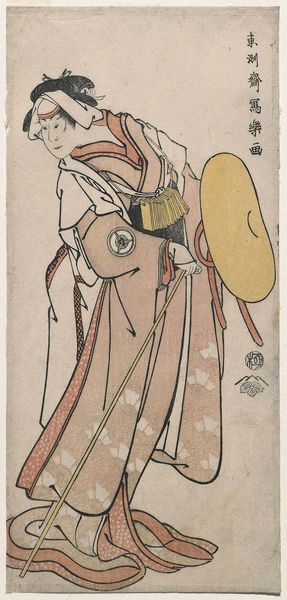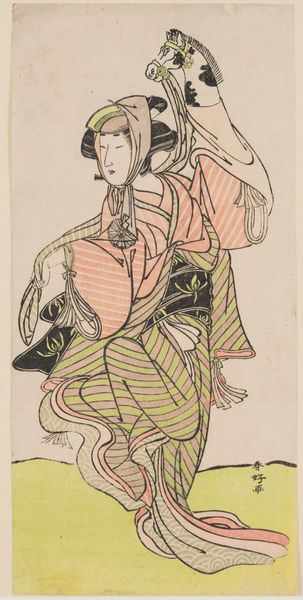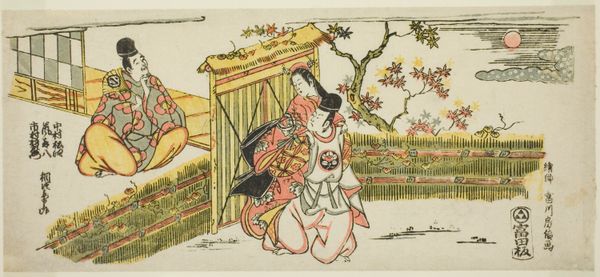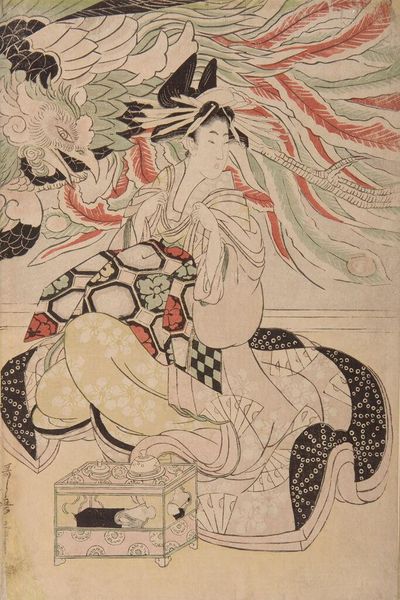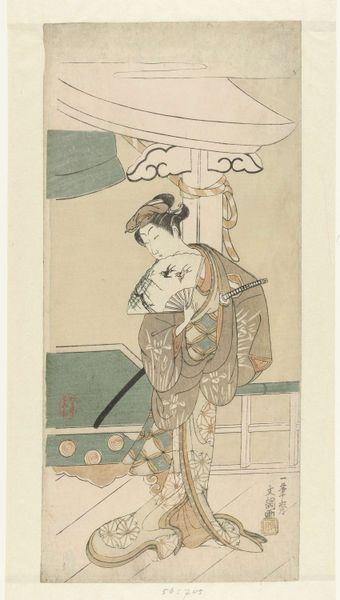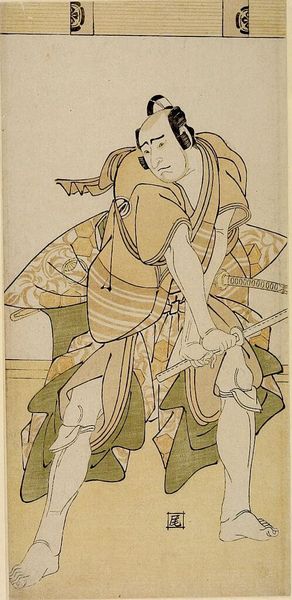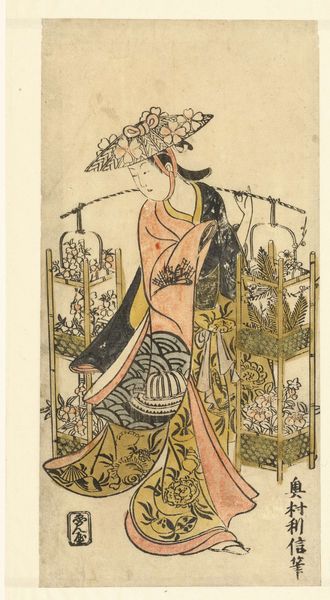
drawing, ink
#
drawing
#
quirky illustration
#
pen illustration
#
pen sketch
#
asian-art
#
ukiyo-e
#
cartoon sketch
#
figuration
#
personal sketchbook
#
ink
#
ink drawing experimentation
#
pen-ink sketch
#
line
#
pen work
#
sketchbook drawing
#
sketchbook art
#
erotic-art
Dimensions: height 136 mm, width 337 mm
Copyright: Rijks Museum: Open Domain
Curator: Today, we’re looking at “Minnend paar achter kamerscherm,” or "Lovers behind a screen," a drawing by Sugimura Jihei, dating from around 1740 to 1745. It’s currently housed here at the Rijksmuseum. What are your initial thoughts? Editor: It strikes me as simultaneously playful and intensely private. The limited palette emphasizes the stark contrast between the figures and the ornate screen, amplifying the sense of intimacy but somehow not. Curator: Indeed. Let's analyze that contrast. Jihei masterfully employs line – confident, unwavering strokes defining the figures, juxtaposed with the denser, almost chaotic linework within the dragon motif on the screen. This suggests a structured opposition. Editor: Precisely. That screen—dragons are a complex symbol aren’t they? Often signifying power and protection but also chaos. Here, the dragon’s fierce energy, contained by the screen, juxtaposes wildly with the overt display of affection, suggesting a hidden or controlled passion. And aren’t we, as the viewer, positioned as voyeurs looking into their private moment. Curator: An interesting perspective. Looking at the purely formal composition, notice how the intertwined limbs create a dynamic, almost self-contained unit. The artist frames this unit using the solid form of the screen, underscoring its separateness from the space we, as viewers, occupy. The dragon exists to create the separation of observer to subject. Editor: Yes, I agree. The very fact it’s presented as ukiyo-e artwork—the woodblock prints that capture everyday life—yet presents an illicit love scene hints to its importance in its original context, doesn’t it? To capture human desire and passion as part of this life, without sugarcoating its animalistic rawness or societal restraints speaks of societal context through a single image. Curator: So we might conclude that while formally concise, the work layers narrative and emotional tension via a shrewd structural balancing of human form and symbolic barrier. Editor: Precisely. It uses a carefully controlled graphic vocabulary to hint at the unrestrained. Jihei captures universal desires and unspoken social commentaries of its period via cultural cues like the symbolism on the screen to invite us in. Curator: A perspective that highlights the artwork’s layered dialogue between surface and depth, a great reading. Editor: A graphic portrayal that is as captivating as it is culturally loaded.
Comments
No comments
Be the first to comment and join the conversation on the ultimate creative platform.
